Low carbon heating in domestic buildings - technical feasibility: technical appendix
Technical appendix to accompany the technical feasibility of low carbon heating in domestic buildings report.
1 Suitability of Scotland's housing stock for individual low-carbon heating technologies
1.1 Introduction
The suitability of Scotland's housing stock for the considered low-carbon heating technologies was further investigated. For each technology, the characteristics of suitable and unsuitable homes were analysed and compared. Additionally, the number of homes that are affected by different suitability constraints was assessed.
The following sections report our findings on the stock suitability for each technology in 2017. For those technologies where the fuse limit constraint or the peak specific heat demand constraint are relevant, separate sets of outputs were produced for a range of threshold values: 60A, 80A and 100A for fuse limit and 100, 120 and 150 W/m2 for specific heat loss.
A figure summarising our results was therefore produced for each technology and threshold sensitivity. Each figure reports on the left a summary of the composition of the suitable and unsuitable portions of the stock, showing a breakdown of homes according to their age, property type, property size, wall insulation, roof insulation and existing heating system. On the right, the number of homes affected by each suitability constraint is reported (blue), together with the total number of constrained homes (red). Note that the total number of constrained homes is generally smaller than the sum of homes affected by each constraint, as the same home may be affected by more than one constraint at a time.
No results are reported in this section for GSHP and high-temperature GSHP, as the analysis of their suitability was performed on the basis of only two characteristics of the stock: the dwelling type and the location in an urban or rural area.
1.1.1 Characteristics of the housing stock
The choice of dwelling characteristics considered in the archetype definition was predominantly based on characteristics influencing the suitability of low-carbon heating in Scottish homes. An overview of the dwelling characteristics reported in the plots in the next sections is shown in Table 1.
| Attributes | Values | Notes |
|---|---|---|
| Age |
|
The age group 1919-1991 was not further disaggregated, as associated potential restrictions on renovation and materials are expected to be similar among this group. |
| Property type |
|
'Semi-detached' includes both semi-detached houses and end-terraced houses, as these are expected to have similar heat demand per unit floor area, having the same number of external walls. 'Terraced' only includes mid-terraced houses. 'Flat (block)' includes homes in large blocks of flats, composed of >15 residential dwellings located within a single building. 'Flat (other)' includes homes in smaller blocks of flats, composed of up to 15 residential dwellings located within a single building. |
| Size |
|
Total dwelling floor area |
| Wall insulation |
|
'High exposure to wind and rain' corresponds to 'very severe' or 'severe' exposure. Similarly, 'low exposure to wind and rain' corresponds to 'sheltered' or 'moderate' exposure. |
| Roof insulation |
|
Homes with non-habitable space in the loft were assigned a value according to the thickness of their roof insulation ('<100 mm', '100-250 mm' or '>250 mm'). Homes with habitable space in the loft were assigned the value 'Room in roof' for insulation of less than 200 mm, or the value '>250 mm' for insulation of more than 200 mm. Homes with no access to the loft (e.g. flats) were assigned the value 'no loft'. |
| Existing heating system |
|
'Oil boiler' heating systems include both oil and LPG boilers. 'Electric' heating systems include electric storage and direct electric. 'Other' heating systems include: biomass boilers, solid fuel boilers, communal heating and homes with no heating system. The type of pre-existent heat distribution system was not considered a barrier to suitability of heating technologies. |
1.1.2 Suitability constraints
The suitability constraints considered in this study and reported in our plots are peak heating demand, heat density, gas network, space constraint, installation disruption and solar orientation.
Peak heating demand
Peak heating demand includes both fuse limit and peak specific heat demand constraints.
The fuse limit constraint is relevant for heating technologies that rely on electricity, as a large peak heat demand may result in a peak consumption of electrical power that can be incompatible with the fuse rating of a home. Therefore, this constraint may affect the implementation of all types of electric heating and conventional or high-temperature heat pumps.
Peak specific heat demand is intended as total heat demand of a dwelling divided by the total floor area of the habitable rooms. A large peak specific heat demand may be an obstacle for the implementation of air-source and ground-source heat pumps, as the required low-temperature radiators may be insufficient to ensure thermal comfort during all seasons.
Heat density
A heat density constraint was considered to test the suitability of homes for district heating.
A map of Scotland's domestic heating demand was analysed and homes located in areas with local heat demand density above a threshold of 40kWh/m2 were considered compatible with district heating. This heat demand density test was performed both on each Scottish datazone and on each square of a grid with 1 km2 resolution, with either of the two tests being sufficient for suitability. The assessment on the 1 km2 resolution grid was performed in order to identify rural areas with local high heat density that would otherwise not have emerged from the datazone analysis, as rural datazones have very large areas.
80% of homes that resulted compatible with district heating were assumed to be suitable for district heating, based on the likely cost-effectiveness of DH deployment.
Gas network
The gas network constraint was applied to all homes that are not located on the gas grid. This constraint impacts the installation of heating technologies that rely on low-carbon gas, such as hydrogen boilers, natural gas boilers with biomethane grid injection and hybrid heat pumps with natural gas.
Space constraint
Homes with total dwelling floor area per habitable room smaller than 18m2 are considered space constrained. This constraint is expected to affect the installation of conventional, high-temperature and hybrid heat pumps, due to their additional requirement of a large hot water cylinder for the production of hot water.
Installation disruption
A high level of disruption is expected for the implementation of all heat pump technologies and solid biomass boilers, due to the extensive work required for the installation of large equipment and new radiators, and to the allocation of storage for solid biomass. A higher hassle factor is expected to be associated with older homes and homes which may require planning consent to perform minor construction work. Therefore, it was assumed that 50% of old homes (built before 1919), listed homes and homes in conservation areas are constrained by installation disruption.
Solar orientation
The solar orientation constraint affects the suitability for heating technologies in combination with solar thermal. Only homes with roofs facing south, south east or south west were considered suitable for solar thermal.
1.2 ASHP
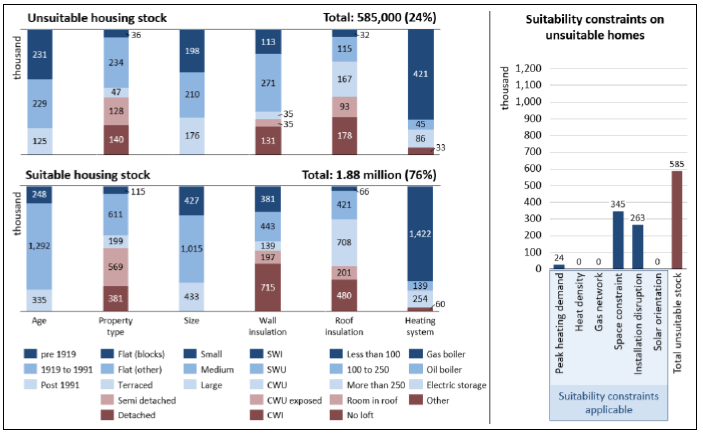
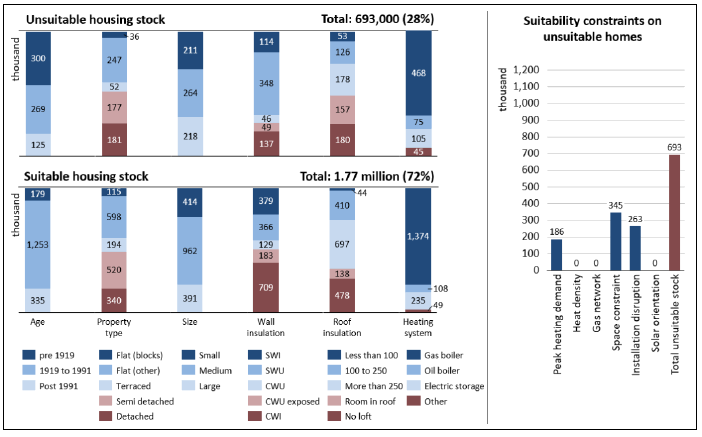
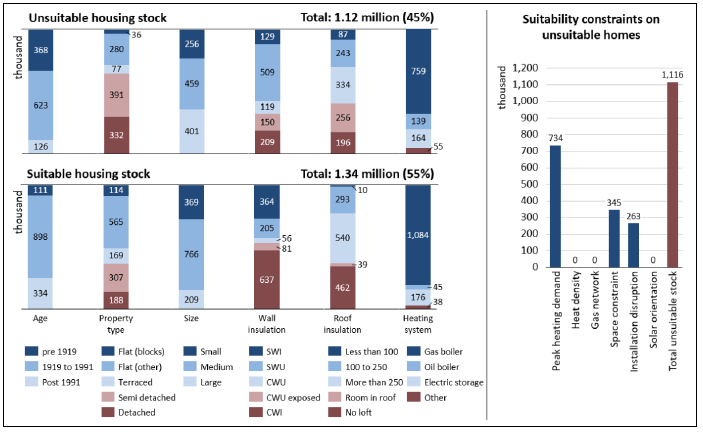
1.3 High-temperature ASHP
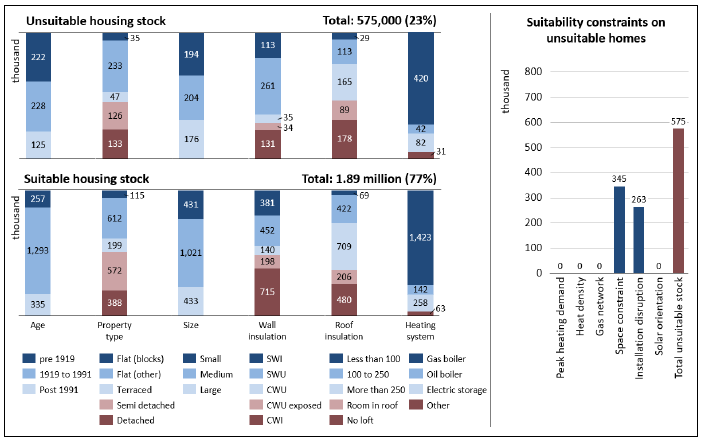
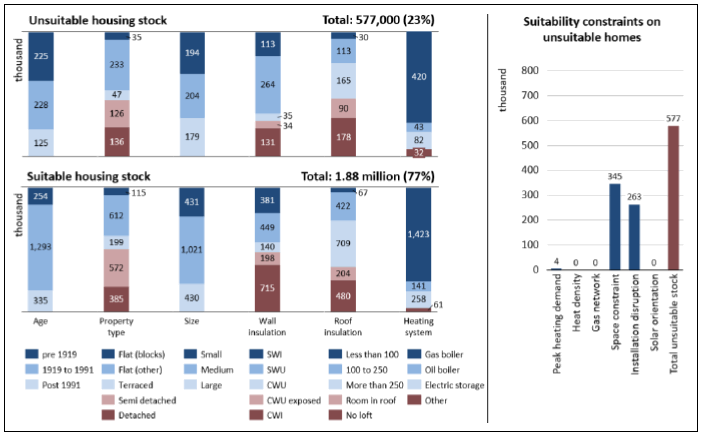
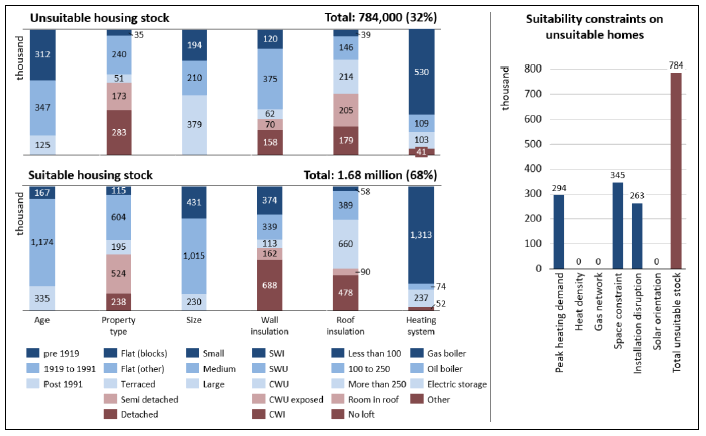
1.4 Communal ASHP
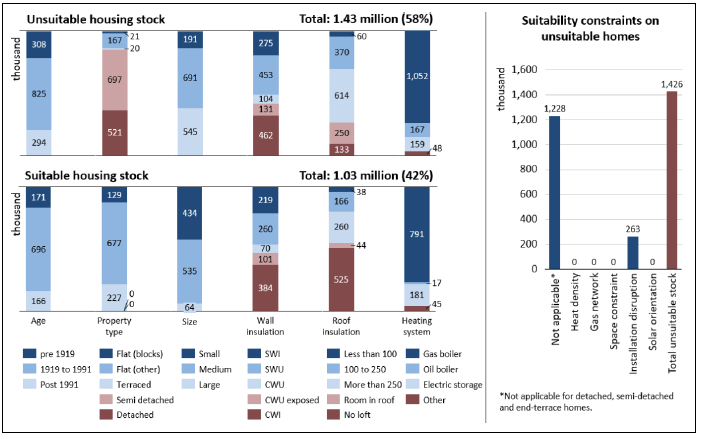
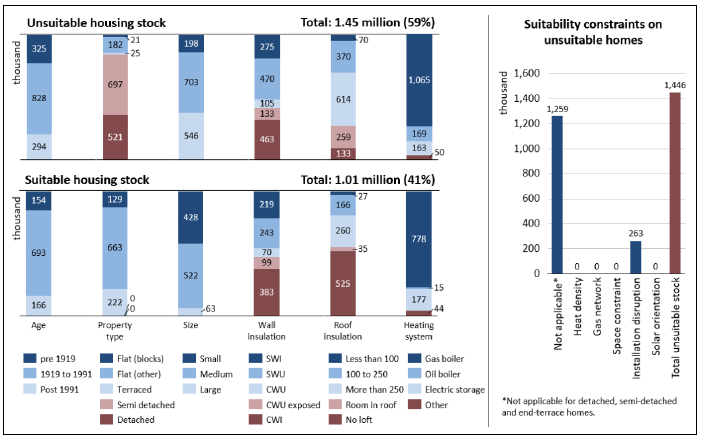
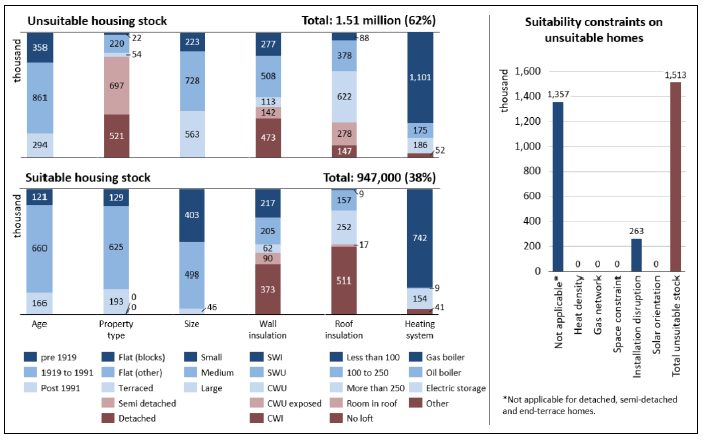
1.5 Electric storage heating
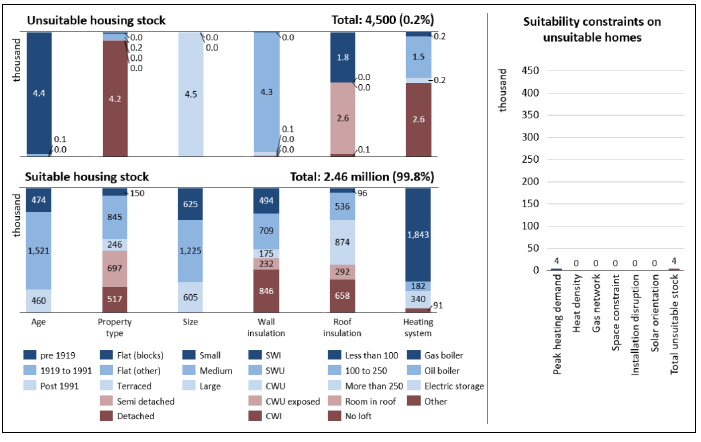
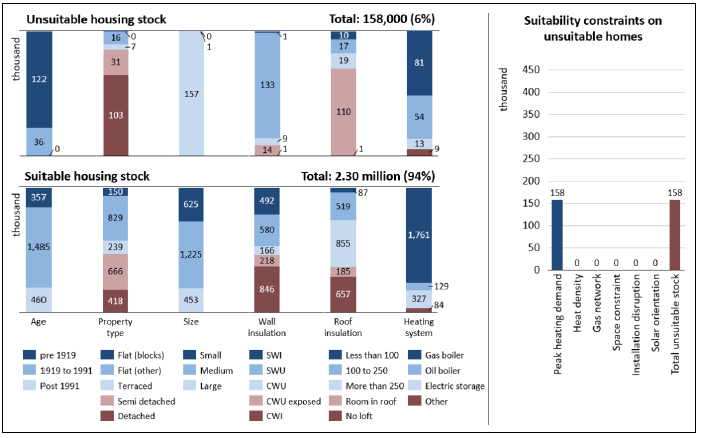
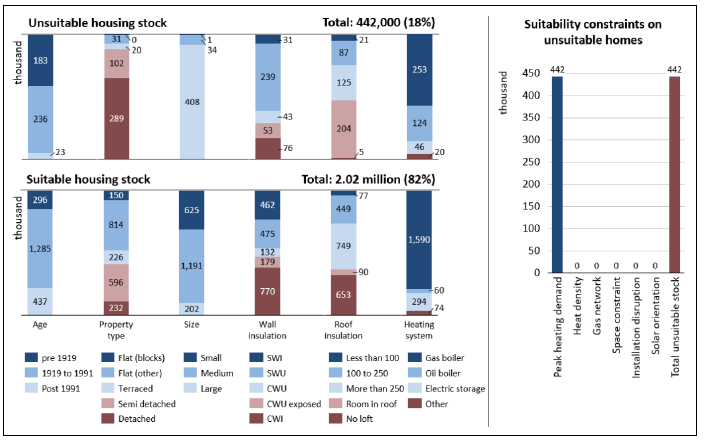
1.6 Direct electric heating
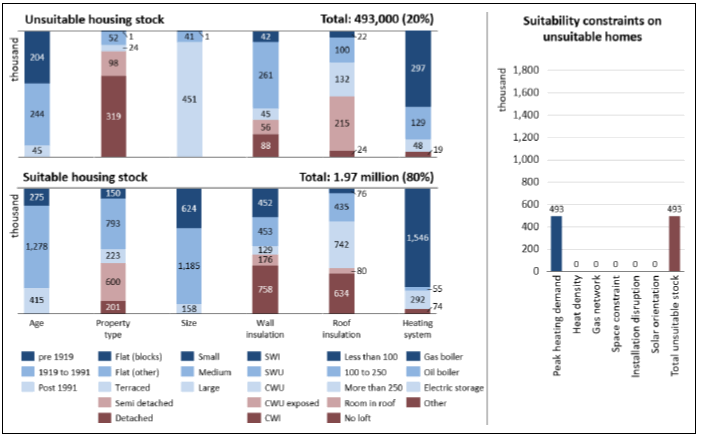
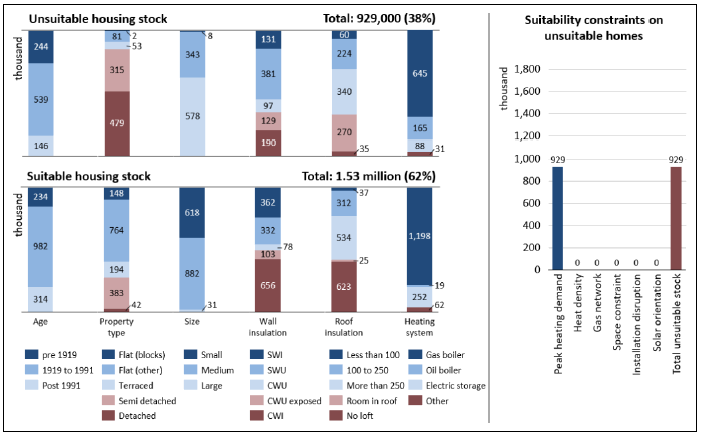
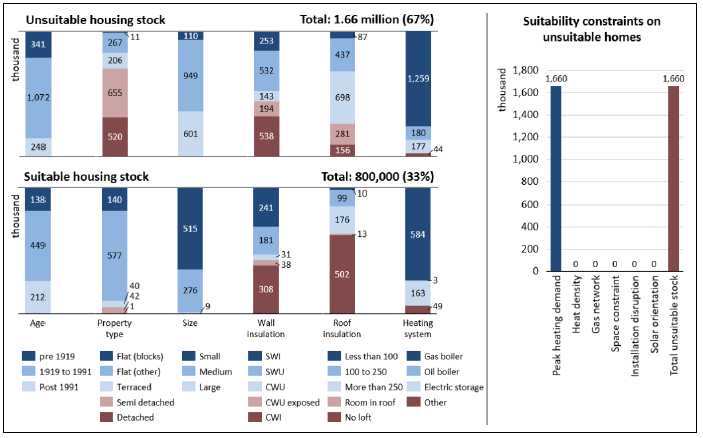
1.7 Electric boilers
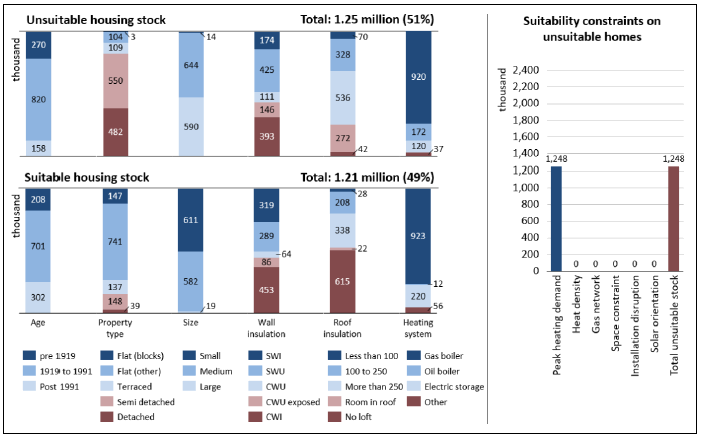
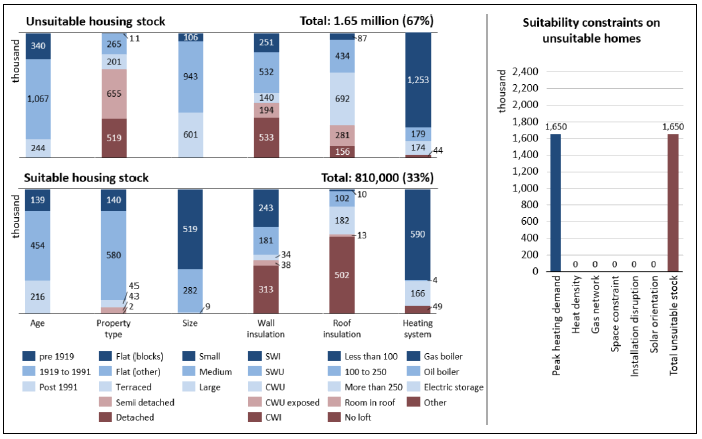
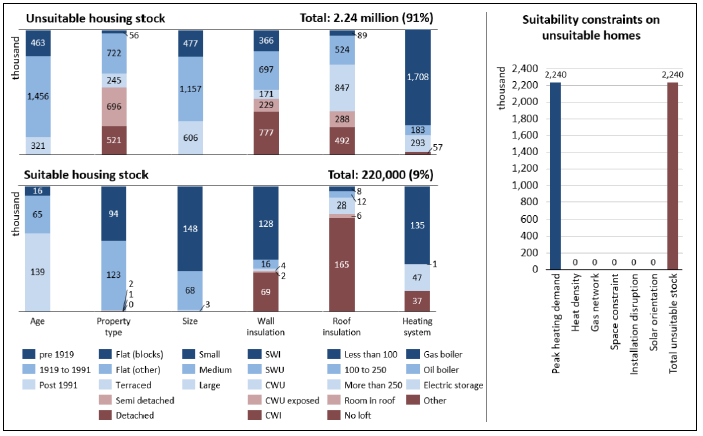
1.8 Solid biomass boilers
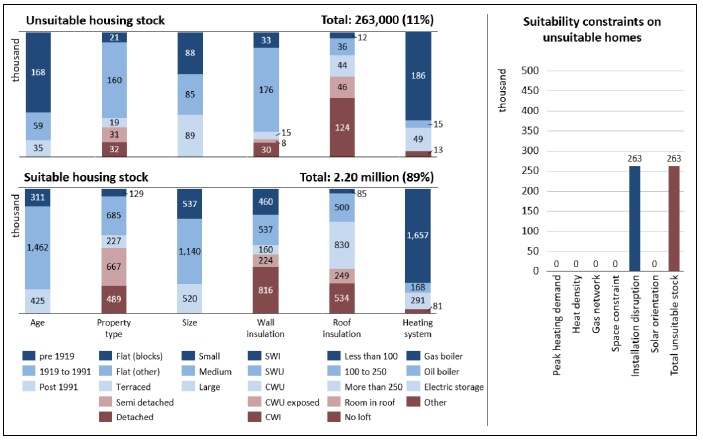
1.9 BioLPG boilers and bioliquid boilers
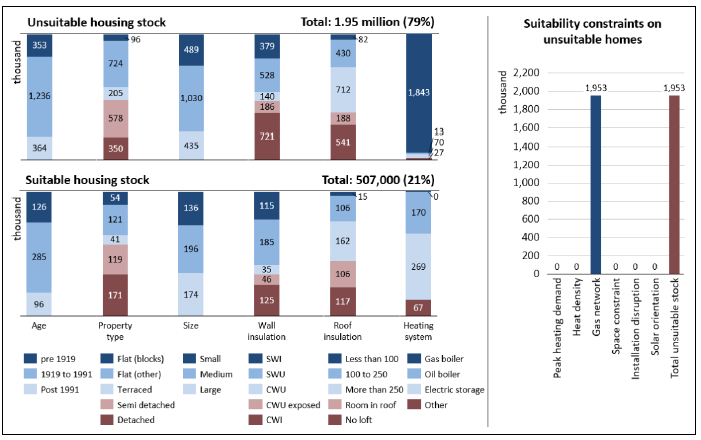
1.10 Hydrogen boilers and biomethane grid injection
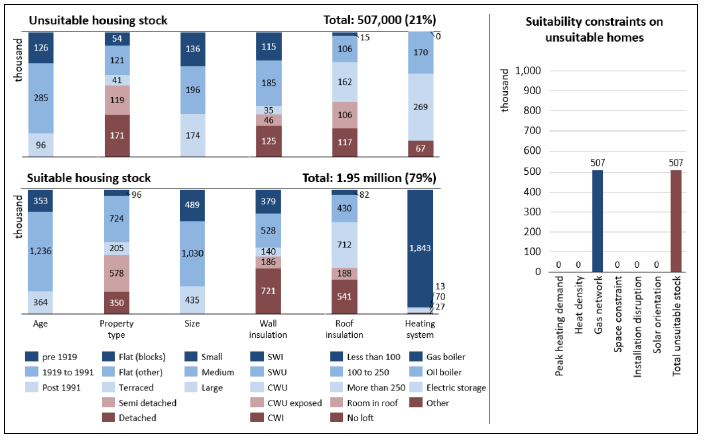
1.11 Hybrid heat pumps with gas boilers or hydrogen boilers
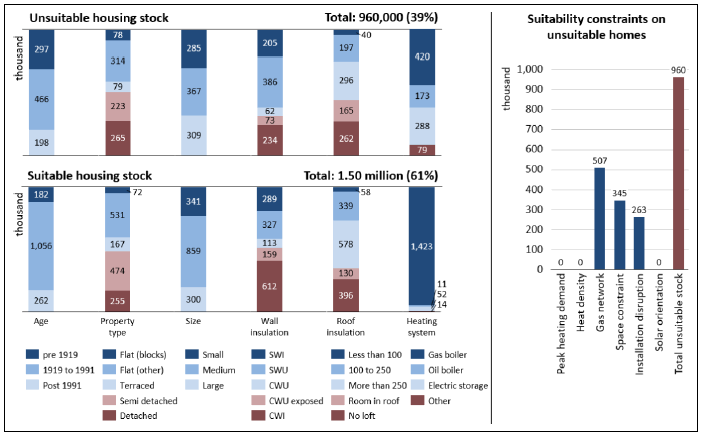
1.12 Hybrid heat pumps with bioliquid
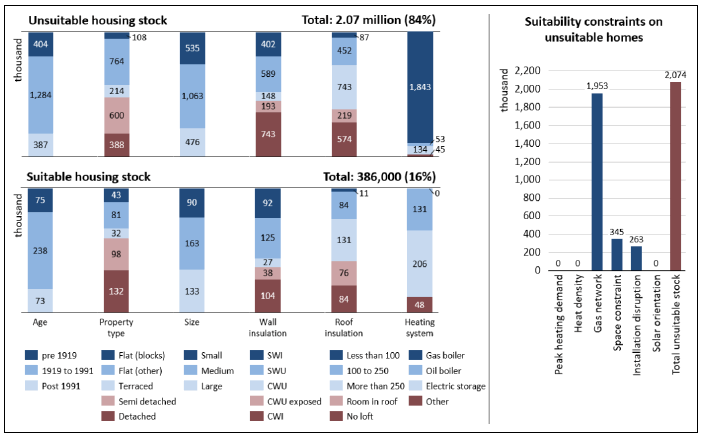
1.13 Hybrid heat pumps with direct electric heating
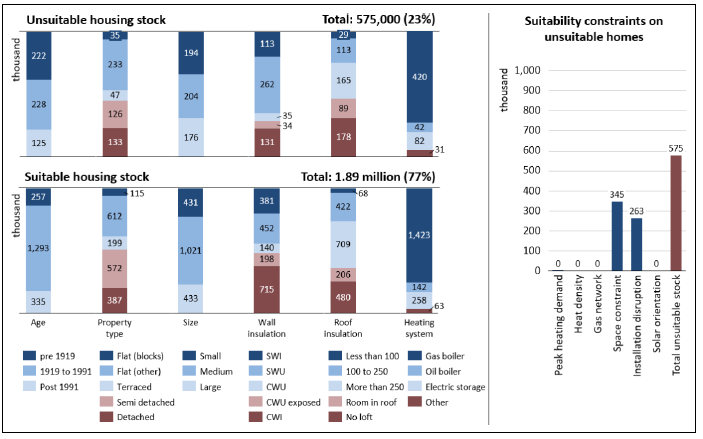
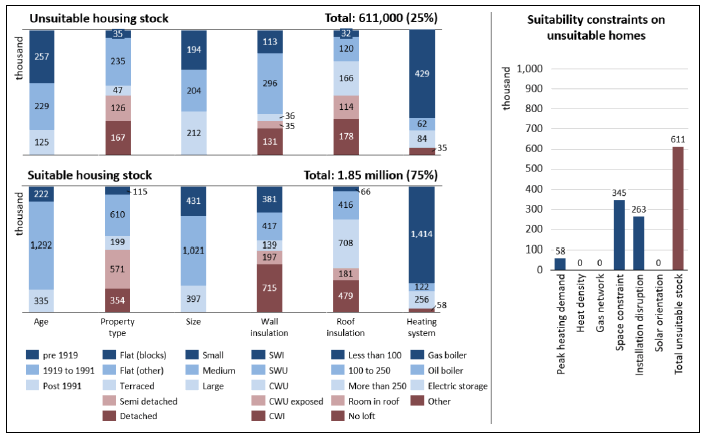
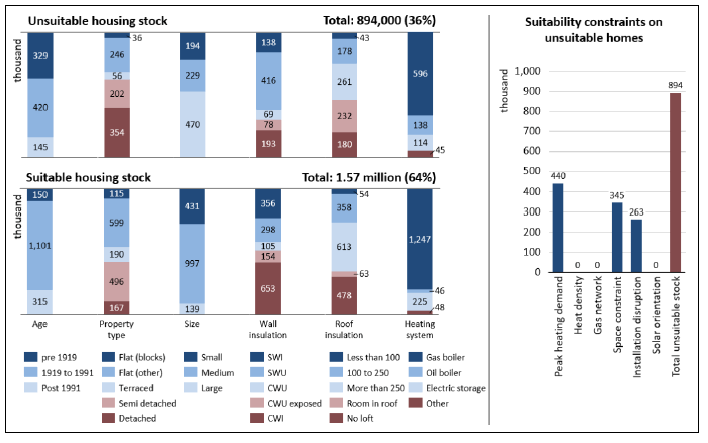
1.14 District heating
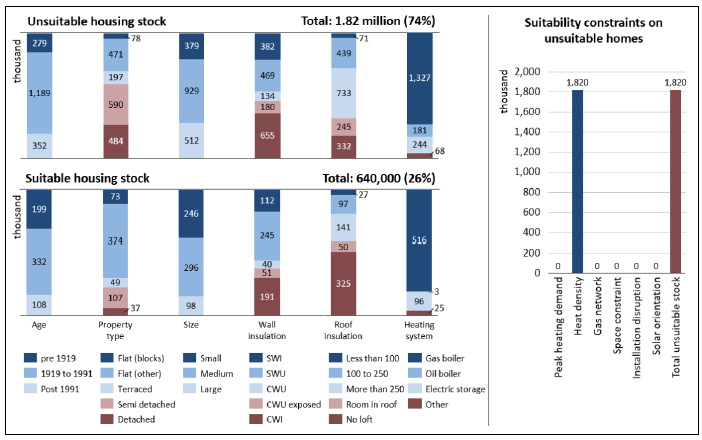
1.15 ASHP with solar thermal
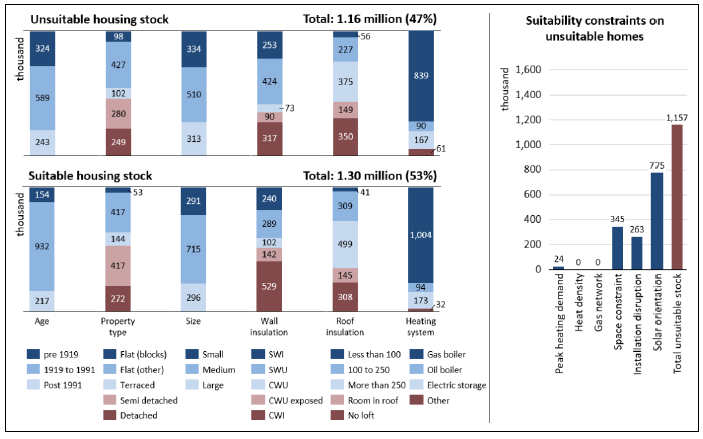
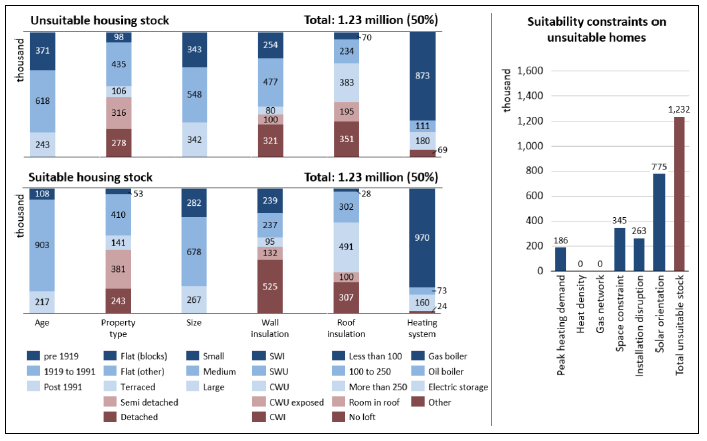
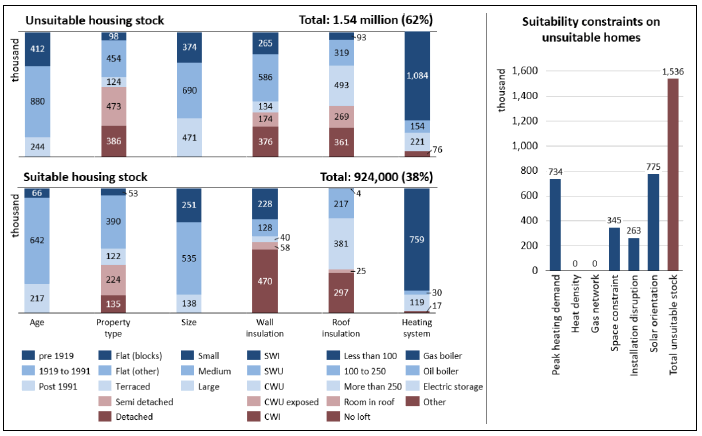
1.16 Electric storage heating with solar thermal
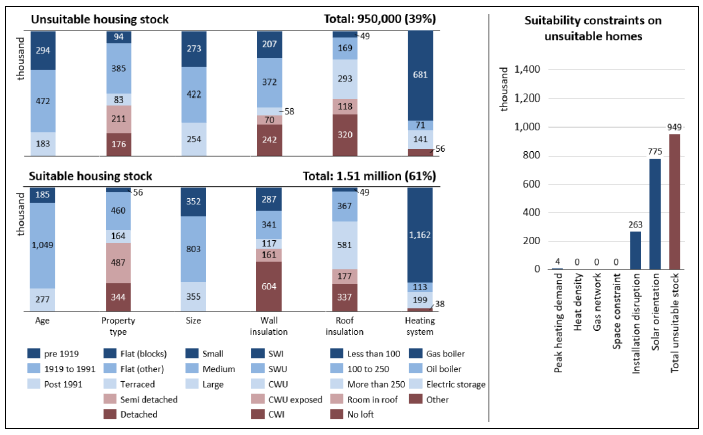
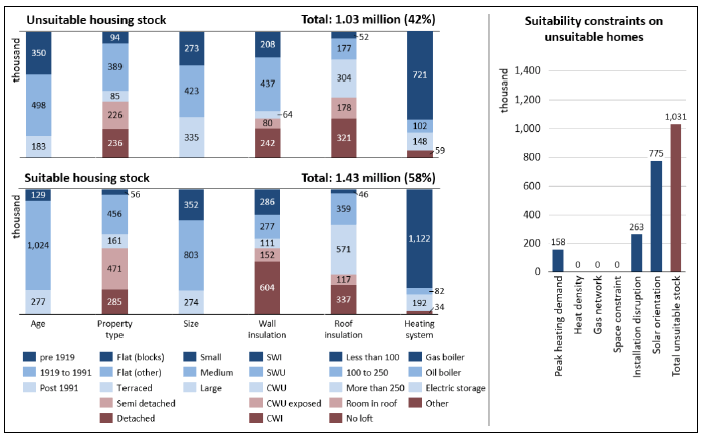
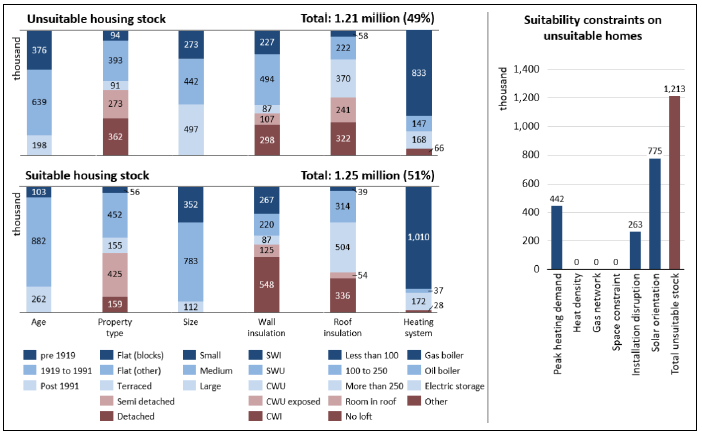
1.17 Direct electric heating with solar thermal
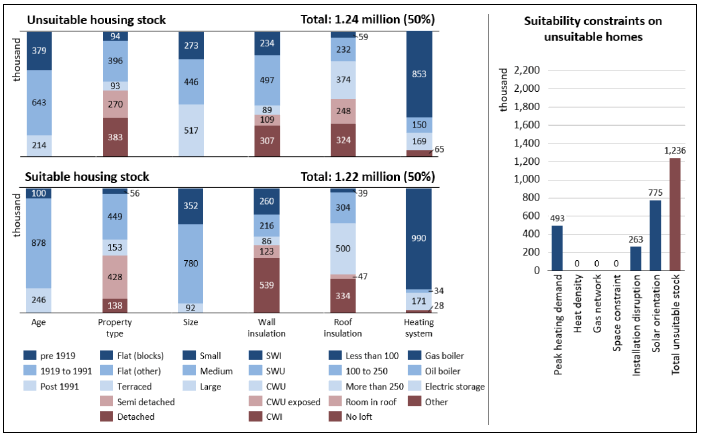
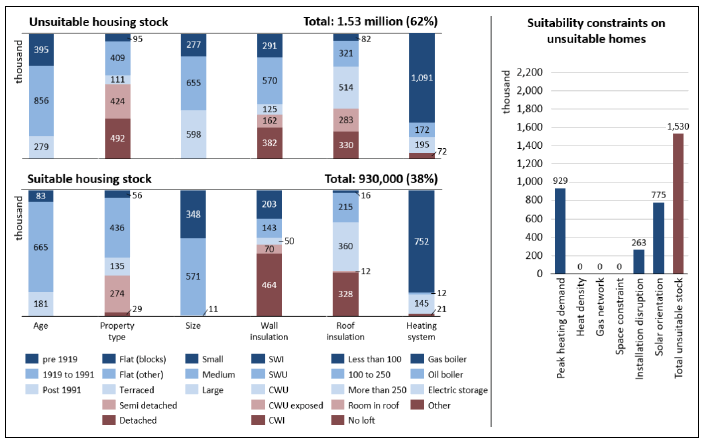
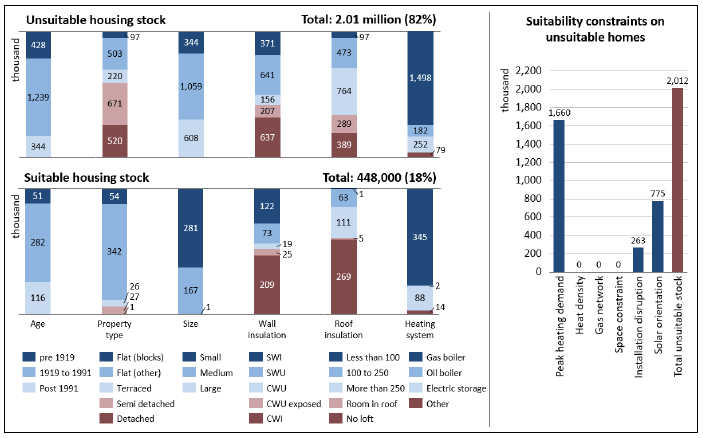
1.18 Electric boilers with solar thermal
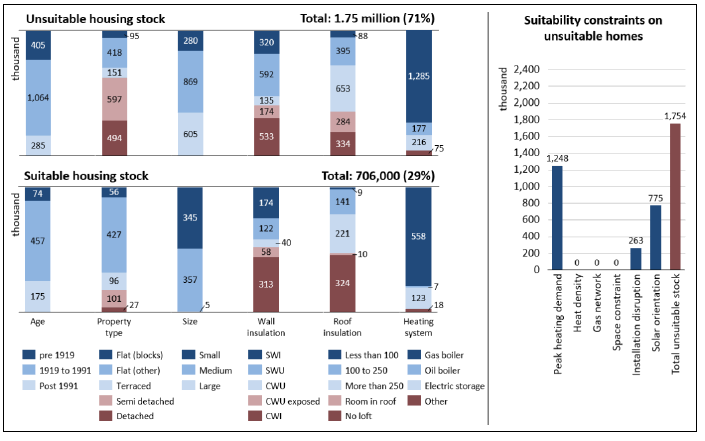
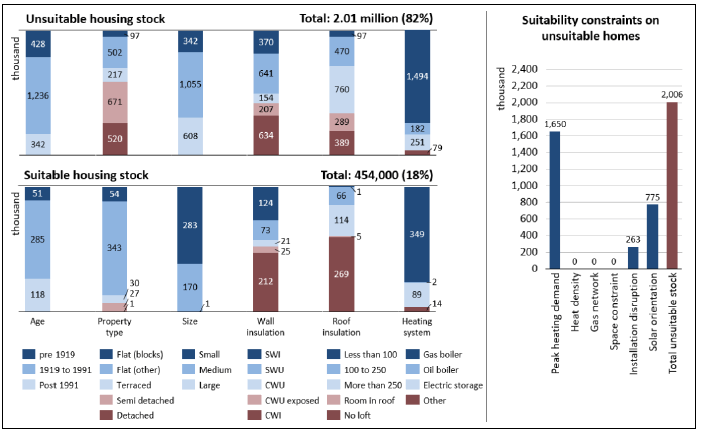
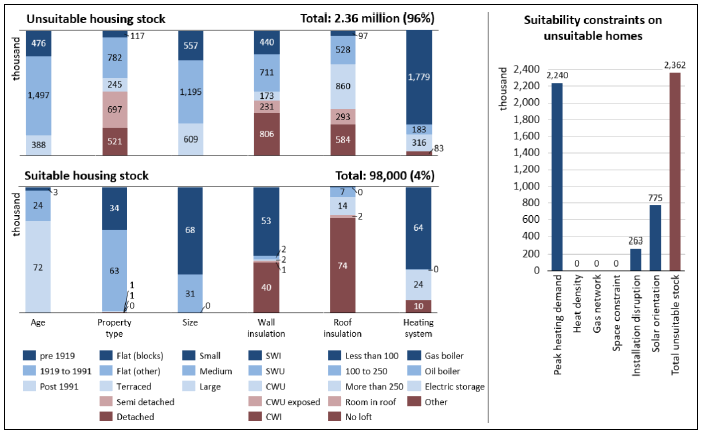
Contact
Email: zeroemissionsheat@gov.scot
There is a problem
Thanks for your feedback